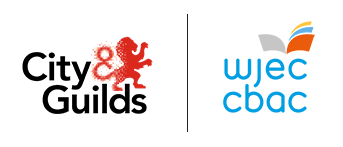
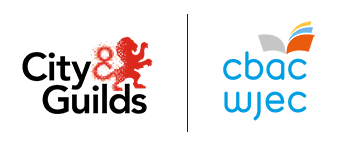



Safeguarding is about working with children, young people and adults to identify possible dangers to enable them to keep themselves safe from harm, abuse or neglect. It is also about ensuring the provision of safe and effective care, preventing any impairment in health and development and promoting well-being, voice, choice and control.
Safeguarding includes a need to recognise signs of potential harm, abuse or neglect and reporting concerns by following the organisation’s safeguarding procedure. It is important to promote trust to enable individuals to feel safe to disclose information that will enable them to keep themselves safe.
The Social Services and Well-being (Wales) Act defines a child as someone under the age of eighteen and an adult as someone over the age of eighteen. This unit is going to provide an overview of safeguarding in relation to children, young people and adults. They will sometimes be referred to as ‘individuals’ unless stated otherwise, i.e. an issue specifically relates to children and young people or adults.
The word ‘individual’ is used in the Act to stress that everyone is unique with different care and support needs. It is very important to have clear definitions from the outset because these definitions stem from relevant legislation and Welsh Government policy.
Mae diogelu yn ymwneud â gweithio gyda phlant, pobl ifanc ac oedolion i nodi peryglon posibl i'w galluogi i'w cadw eu hunain yn ddiogel rhag niwed, camdriniaeth neu esgeulustod. Mae hefyd yn ymwneud â sicrhau bod gofal diogel ac effeithiol yn cael ei ddarparu, gan atal unrhyw amhariad ar iechyd a datblygiad a hyrwyddo lles, llais, dewis a rheolaeth.
Mae diogelu yn cynnwys yr angen i nodi arwyddion niwed, camdriniaeth neu esgeulustod posibl ac adrodd ar bryderon trwy ddilyn gweithdrefn ddiogelu'r sefydliad. Mae'n bwysig hyrwyddo ymddiriedaeth er mwyn galluogi unigolion i deimlo'n ddigon diogel i ddatgelu gwybodaeth a fydd yn eu galluogi i'w cadw eu hunain yn ddiogel.
Mae Deddf Gwasanaethau Cymdeithasol a Llesiant (Cymru) yn diffinio plentyn fel rhywun o dan ddeunaw oed ac oedolyn fel rhywun dros ddeunaw oed. Bydd yr uned hon yn darparu trosolwg o ddiogelu mewn perthynas â phlant, pobl ifanc ac oedolion. Weithiau cyfeirir atynt fel ‘unigolion’ oni bai y nodir yn wahanol, h.y. mae mater yn ymwneud yn benodol â phlant a phobl ifanc neu oedolion.
Defnyddir y gair ‘unigolyn’ yn y Ddeddf i bwysleisio bod pawb yn unigryw â gwahanol anghenion ynghylch gofal a chymorth. Mae'n bwysig iawn cael diffiniadau clir o'r cychwyn cyntaf oherwydd bod y diffiniadau hyn yn deillio o ddeddfwriaeth berthnasol a pholisi Llywodraeth Cymru.

Safeguarding is everyone’s responsibility. Workers and volunteers have to be trained to know the signs and symptoms of abuse or neglect, how to respond and where to go for advice and support.
Internally this can be from their manager and the organisation’s safeguarding procedures.
Externally a manager might contact local authority Social Services to report a safeguarding concern or access information provided by Social Services or a Regional Safeguarding Board.
There are six Regional Safeguarding Boards in Wales that have a number of agencies that work together to prevent and overcome harm, abuse or neglect in a specific area.
Workers need to know who to contact about safeguarding outside their organisation in case they believe that it is not fulfilling its safeguarding responsibility. It may be that safeguarding procedures are being ignored or there are concerns about the conduct of some workers or the organisation’s leadership. Safeguarding promotes child-centred and person-centred practice by requiring organisations and workers to make sure that the health, well-being and safety of individuals is central to their service delivery.
Mae’n gyfrifoldeb ar bawb i ddiogelu. Rhaid hyfforddi gweithwyr a gwirfoddolwyr i adnabod arwyddion a symptomau camdriniaeth neu esgeulustod, sut i ymateb a ble i fynd i gael cyngor a chymorth.
Yn fewnol, gall hyn olygu eu rheolwr a gweithdrefnau diogelu'r sefydliad. Yn allanol, gallai rheolwr gysylltu â Gwasanaethau Cymdeithasol yr awdurdod lleol i adrodd am bryder ynghylch diogelu neu gyrchu gwybodaeth a ddarperir gan y Gwasanaethau Cymdeithasol neu Fwrdd Diogelu Rhanbarthol. Mae chwe Bwrdd Diogelu Rhanbarthol yng Nghymru sydd â nifer o asiantaethau sy'n gweithio gyda'i gilydd i atal a goresgyn niwed, camdriniaeth neu esgeulustod mewn maes penodol.
Mae angen i weithwyr wybod â phwy i gysylltu ynghylch diogelu y tu allan i'w sefydliad rhag ofn eu bod yn credu nad yw'n cyflawni ei gyfrifoldeb diogelu. Efallai fod gweithdrefnau diogelu yn cael eu hanwybyddu neu fod pryderon yn bodoli ynghylch ymddygiad rhai gweithwyr neu arweinyddiaeth y sefydliad. Mae diogelu yn hyrwyddo arfer sy'n canolbwyntio ar y plentyn ac sy'n canolbwyntio ar yr unigolyn trwy ei wneud yn ofynnol i sefydliadau a gweithwyr sicrhau bod iechyd, lles a diogelwch unigolion yn ganolog i'r modd maent yn cyflenwi gwasanaethau.
In your own words, briefly explain what you understand safeguarding to be.
Yn eich geiriau eich hun, esboniwch yn gryno beth yw ystyr diogelu.
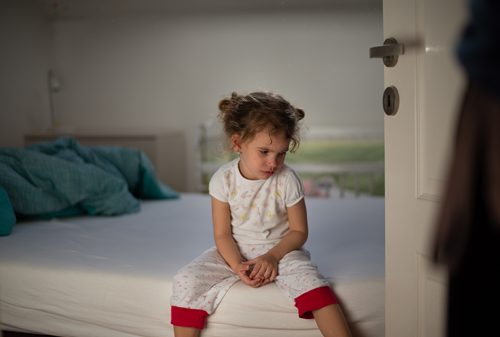
The Social Services and Well-being (Wales) Act separates out categories of abuse or neglect for adults compared to children and young people. Whilst some of the categories are the same, the way that they impact on lives can be different. For example, in the case of financial abuse, an adult may have their own money whereas a child or young person may not. Yet both can be harmed if that money is withheld to prevent them from having sufficient food to safeguard their health and well-being.
This section outlines the main categories of abuse and neglect. It is important to remember that other forms of abuse such as discrimination and hate crime must be taken into account when safeguarding. There is also a legal duty to report Female Genital Mutilation (FGM) in relation to a child or young person under the age of eighteen to the police.
The abuse or neglect of adults, children and young people can take place anywhere including the home, public places such as parks and open spaces and a range of health and social care settings. It can also take place in person or on-line, e.g. sexual, emotional or psychological abuse.
The main categories of abuse and neglect in relation to children and young people are:
The main categories of abuse and neglect in relation to adults are:
Information about further types and indicators of abuse and neglect can be found on the Social Care Institute for Excellence (SCIE) website:
https://www.scie.org.uk/safeguarding/adults/introduction/types-and-indicators-of-abuse
Mae'r Ddeddf Gwasanaethau Cymdeithasol a Llesiant (Cymru) yn gwahanu categorïau camdriniaeth neu esgeulustod i oedolion o gymharu â phlant a phobl ifanc. Er bod rhai o'r categorïau yr un peth, gall y ffordd maent yn effeithio ar fywydau fod yn wahanol. Er enghraifft, yn achos camdriniaeth ariannol, gallai fod gan oedolyn ei arian ei hun ond efallai na fydd hynny'n wir gyda phlentyn neu berson ifanc. Ac eto, gall y ddau gael eu niweidio os caiff yr arian hwnnw ei ddal yn ôl i'w hatal rhag cael digon o fwyd i ddiogelu eu hiechyd a'u lles.
Mae’r adran hon yn amlinellu prif gategorïau camdriniaeth ac esgeulustod. Mae'n bwysig cofio bod rhaid ystyried mathau eraill o gam-drin fel gwahaniaethu a throseddau casineb wrth ddiogelu. Mae dyletswydd gyfreithiol hefyd i roi gwybod i'r heddlu am Anffurfio Organau Cenhedlu Benywod (FGM) mewn perthynas â phlentyn neu berson ifanc o dan ddeunaw oed.
Gall cam-drin neu esgeuluso oedolion, plant a phobl ifanc ddigwydd yn unrhyw le gan gynnwys y cartref, mannau cyhoeddus megis parciau a mannau agored ac ystod o leoliadau iechyd a gofal cymdeithasol. Gall ddigwydd hefyd yn bersonol neu ar-lein, e.e. camdriniaeth rhywiol, emosiynol neu seicolegol.
Y prif gategorïau o gam-drin ac esgeulustod mewn perthynas â phlant a phobl ifanc yw:
Y prif gategorïau o gam-drin ac esgeulustod mewn perthynas ag oedolion yw:
Gellir gweld gwybodaeth am fathau a dangosyddion pellach o gam-drin ac esgeulustod ar wefan Y Sefydliad Gofal Cymdeithasol er Rhagoriaeth (SCIE):
https://www.scie.org.uk/safeguarding/adults/introduction/types-and-indicators-of-abuse
Click on the answer you think is correct.
Cliciwch ar yr ateb rydych chi’n meddwl sy’n gywir.
Financial abuse can be defined as: Gellir diffinio camdriniaeth ariannol fel:
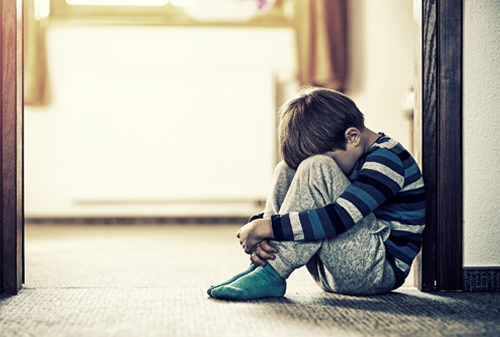
Physical abuse signs and symptoms include unexplained bruises and marks, bites, burns, broken bones, low self-esteem, poor hygiene, depression, being withdrawn and shying away from certain individuals.
Sexual abuse signs and symptoms include showing sexual behaviour that’s inappropriate for their age, unexplained bruising, low self-esteem, isolation, depression, poor hygiene, changes in appearance and being jumpy/scared.
Emotional/psychological abuse signs and symptoms include having low self-esteem, being withdrawn, depression, having poor hygiene, changes in routine or changes in eating habits.
Financial abuse could affect an individual in many ways. They may have low self-esteem, be withdrawn or depressed, have poor hygiene, no heating or food or unable to afford to pay the bills.
Neglect by others is often indicated by weight loss, poor hygiene, low self-esteem, withdrawnness, not being given their medication or enough food and heating. Another indicator is late development in children. For example, they may be slow to learn to talk or be toilet trained; may be dirty, hungry or thirsty and parents may not show an interest in the child’s progress and be reluctant to allow visits from friends or professionals.
Mae arwyddion a symptomau camdriniaeth corfforol yn cynnwys cleisiau a marciau anesboniadwy, brathiadau, llosgiadau, esgyrn wedi'u torri, hunan-barch isel, hylendid gwael, iselder, bod yn encilgar a chilio oddi wrth rai unigolion.
Mae arwyddion a symptomau camdriniaeth rhywiol yn cynnwys dangos ymddygiad rhywiol sy'n amhriodol i'w hoedran, cleisiau anesboniadwy, hunan-barch isel, unigedd, iselder, hylendid gwael, newidiadau mewn golwg a bod yn gynhyrfus/ofnus.
Mae arwyddion a symptomau camdriniaeth emosiynol/seicolegol yn cynnwys bod â hunan-barch isel, bod yn encilgar, iselder, bod â hylendid gwael, newidiadau mewn trefn neu newidiadau mewn arferion bwyta.
Gallai camdriniaeth ariannol effeithio ar unigolyn mewn sawl ffordd. Efallai fod ganddynt hunan-barch isel, gallent fod yn encilgar neu'n isel, bod â hylendid gwael, heb wres na bwyd neu'n methu â fforddio talu'r biliau.
Yn aml dangosir esgeulustod gan eraill gan golli pwysau, hylendid gwael, hunan-barch isel, bod yn encilgar, peidio â chael eu meddyginiaeth na digon o fwyd a gwres. Dangosydd arall yw datblygiad hwyr ymhlith plant. Er enghraifft, gallent fod yn araf wrth ddysgu siarad neu gael eu hyfforddi i ddefnyddio'r toiled; gallent fod yn fudr, yn llwglyd neu'n sychedig ac efallai na fydd rhieni'n dangos diddordeb yng nghynnydd y plentyn ac yn amharod i ganiatáu ymweliadau gan ffrindiau neu weithwyr proffesiynol.
Drag the words to the correct spaces.
Llusgwch y geiriau i’r bylchau cywir.
Financial abuse involves unexplained loss of money and personal possessions, missing receipts, insufficient money for bills, workers/carers benefiting from ‘buy-one-get-one-free’ offers when doing the shopping, dependency on others, diminishing health status due to reduced quality of life.
Financial abuse involves unexplained loss of money and personal possessions, missing receipts, insufficient money for bills, workers/carers benefiting from ‘buy-one-get-one-free’ offers when doing the shopping, dependency on others, diminishing health status due to reduced quality of life.
You scored … out of . Move some of the terms around to try to improve your score.
Well done. You scored … out of .
You scored … out of . Click reset to try the activity again.
You scored … out of . Move some of the terms around to try to improve your score.
Well done. You scored … out of .
You scored … out of . Click reset to try the activity again.
Mae camdriniaeth ariannol yn cynnwys colli arian ac eiddo personol heb esboniad, derbynebau ar goll, dim digon o arian ar gyfer biliau, gweithwyr/gofalwyr yn elwa ar gynigion ‘prynu un a chael un am ddim’ wrth wneud y siopa, dibyniaeth ar eraill, statws iechyd sy’n lleihau oherwydd ansawdd bywyd sy’n gwaethygu.
Mae camdriniaeth ariannol yn cynnwys colli arian ac eiddo personol heb esboniad, derbynebau ar goll, dim digon o arian ar gyfer biliau, gweithwyr/gofalwyr yn elwa ar gynigion ‘prynu un a chael un am ddim’ wrth wneud y siopa, dibyniaeth ar eraill, statws iechyd sy’n lleihau oherwydd ansawdd bywyd sy’n gwaethygu.
Mae gennych … allan o yn gywir. Symudwch rhai o'r termau o gwmpas i geisio gwella eich sgôr.
Da iawn. Mae gennych … allan o yn gywir.
Mae gennych … allan o yn gywir. Cliciwch ‘ailosod’ er mwyn rhoi cynnig arall ar y gweithgaredd.
Mae gennych … allan o yn gywir. Symudwch rhai o'r termau o gwmpas i geisio gwella eich sgôr
Da iawn. Mae gennych … allan o yn gywir.
Mae gennych … allan o yn gywir. Cliciwch ‘ailosod’ er mwyn rhoi cynnig arall ar y gweithgaredd.
Click on the answer you think is correct.
Cliciwch ar yr ateb rydych chi’n meddwl sy’n gywir.
Signs associated with physical abuse include: Mae arwyddion sy'n gysylltiedig â cham-drin corfforol yn cynnwys:
The Social Services and Well-being (Wales) Act has specific definitions in relation to safeguarding and these refer to children ‘at risk’ and adults ‘at risk’. Guidance contained within the Act explains that including the term ‘at risk’ means that agencies can take action to prevent harm, abuse or neglect. This means that potential and actual abuse and neglect should be seen as equally important to safeguard individuals’ health, well-being and safety.
The Act refers to a child at risk if:
An adult is at risk if:
Mae gan Ddeddf Gwasanaethau Cymdeithasol a Llesiant (Cymru) ddiffiniadau penodol ynghylch diogelu ac mae’r rhain yn cyfeirio at blant sy'n 'wynebu risg' ac oedolion sy'n 'wynebu risg'. Mae cyfarwyddyd a gynhwysir o fewn y Ddeddf yn egluro bod cynnwys y term ‘wynebu risg’ yn golygu y gall asiantaethau weithredu i atal niwed, camdriniaeth neu esgeulustod. Mae hyn yn golygu y dylid ystyried bod camdriniaeth ac esgeulustod posibl a gwirioneddol yr un mor bwysig er mwyn diogelu iechyd, lles a diogelwch unigolion.
Mae'r Ddeddf yn cyfeirio at blentyn sydd mewn perygl os:
Mae oedolyn yn wynebu risg os:

Part 7 of the Social Services and Well-being (Wales) Act introduced a National Independent Safeguarding Board to support the work of Regional Safeguarding Boards. The National Safeguarding Board has a responsibility to:
Regional Safeguarding Boards involve a number of agencies and professionals that have a legal duty to work together to safeguard children, young people and adults. Each Regional Safeguarding Board has:
There must be representatives from the following agencies on a Regional Safeguarding Board:
Regional Safeguarding Boards must make sure that safeguarding protects children, young people and adults at risk. Safeguarding must be a firm part of everyday working practice across organisations in a region. Regional Safeguarding Boards have information, advice and guidance on safeguarding available to the public, professionals and organisations. Children, young people and adults can access advice on how to keep themselves and others safe. They can also find out who to contact if they have concerns about their safety, or if they are worried that someone they know is at risk of harm, abuse or neglect.
Information on each Regional Safeguarding Board can be accessed via the following link: http://safeguardingboard.wales/find-your-board/
Fe gyflwynodd Rhan 7 Deddf Gwasanaethau Cymdeithasol a Llesiant (Cymru) Fwrdd Diogelu Annibynnol Cenedlaethol i gefnogi gwaith Byrddau Diogelu Rhanbarthol. Mae gan y Bwrdd Diogelu Cenedlaethol gyfrifoldeb i:
Mae Byrddau Diogelu Rhanbarthol yn cynnwys cyfraniad nifer o asiantaethau a gweithwyr proffesiynol sydd â dyletswydd gyfreithiol i weithio gyda'i gilydd i ddiogelu plant, pobl ifanc ac oedolion. Mae gan bob Bwrdd Diogelu Rhanbarthol:
Rhaid bod cynrychiolwyr o'r asiantaethau dilynol ar Fwrdd Diogelu Rhanbarthol:
Rhaid i Fyrddau Diogelu Rhanbarthol sicrhau bod diogelu yn amddiffyn plant, pobl ifanc ac oedolion sydd mewn perygl. Rhaid i ddiogelu fod yn rhan gadarn o arfer gweithio bob dydd ar draws sefydliadau mewn rhanbarth. Mae gan Fyrddau Diogelu Rhanbarthol wybodaeth, cyngor a chyfarwyddyd ar ddiogelu sydd ar gael i'r cyhoedd, gweithwyr proffesiynol a sefydliadau. Gall plant, pobl ifanc ac oedolion gyrchu cyngor ar sut i'w cadw eu hunain ac eraill yn ddiogel. Hefyd gallant ganfod â phwy i gysylltu os oes ganddynt bryderon ynghylch eu diogelwch, neu os ydynt yn poeni bod rhywun maent yn ei adnabod mewn perygl o niwed, camdriniaeth neu esgeulustod.
Gellir cyrchu gwybodaeth am bob Bwrdd Diogelu Rhanbarthol trwy'r ddolen ddilynol: http://bit.ly/2pjtjEe

Key legislation exists in relation to safeguarding and a full summary of relevant legislation can be found on the Social Care Wales website:
The following legislation covers key aspects of safeguarding:
The Social Services and Well-being (Wales) Act places a duty on an organisation such as those identified on Regional Partnership Boards to inform the local authority if it suspects that a child, young person or adult is at risk under the definition provided by the Act.
When a child is reported to be at risk the local authority must use the same procedures required by Section 47 of the Children Act 1989. This places a duty on all agencies to safeguard and promote the welfare of children and includes sharing concerns at the earliest stage to take preventative action. Workers have a responsibility to act if they witness, receive information about, or have concerns about possible harm, abuse or neglect.
Local authorities have the power to make enquiries if they have reasonable cause to believe an adult is at risk. In exceptional circumstances, an ‘Adult Protection and Support Order’ can be obtained and used to ensure a proper assessment takes place. The order means that workers from the local authority can go into a building with a police officer to see the person, speak to them in private, assess their well-being including whether there is a risk of harm, abuse or neglect to decide what action should be taken next.
There is a legal requirement for Regional Safeguarding Children Boards to work as multi-agency partnerships to promote the safety and well-being of children and young people. The Boards have various responsibilities including overseeing local safeguarding arrangements and practices, Child Practice Reviews and making recommendations for improvements.
There is also a legal requirement for Regional Safeguarding Adults Boards to work as multi-agency partnerships to promote the safety and well-being of adults. The Boards have very similar responsibilities to the Safeguarding Children Boards but their focus is on individuals over the age of eighteen. They oversee local safeguarding arrangements and practices, Adult Practice Reviews and seek to promote improvements as a result of ongoing shared learning between agencies.
The Wales Safeguarding Procedures (2019) are based on the principle that the protection of children from harm is the responsibility of all individuals and agencies working with children and families, and with adults who may pose a risk to children. These policies are currently under review.
Mae deddfwriaeth allweddol yn bodoli mewn perthynas â diogelu a gellir gweld crynodeb llawn o'r ddeddfwriaeth berthnasol ar wefan Gofal Cymdeithasol Cymru:
Mae'r ddeddfwriaeth ddilynol yn ymdrin ag agweddau allweddol ar ddiogelu:
Mae'r Ddeddf Gwasanaethau Cymdeithasol a Llesiant (Cymru) yn gosod dyletswydd ar sefydliad megis y rhai hynny a nodir ar Fyrddau Partneriaeth Rhanbarthol i hysbysu'r awdurdod lleol os yw'n amau bod plentyn, person ifanc neu oedolyn mewn perygl o dan y diffiniad a ddarperir gan y Deddf.
Pan adroddir bod plentyn mewn perygl rhaid i'r awdurdod lleol ddefnyddio'r un gweithdrefnau sy'n ofynnol gan Adran 47 Deddf Plant 1989. Mae hyn yn gosod dyletswydd ar bob asiantaeth i ddiogelu a hyrwyddo lles plant ac mae'n cynnwys rhannu pryderon ar y cam cynharaf i gymryd camau ataliol. Mae gan weithwyr gyfrifoldeb i weithredu os ydynt yn gweld, yn derbyn gwybodaeth ynghylch, neu os oes ganddynt bryderon ynghylch niwed, camdriniaeth neu esgeulustod posib.
Mae gan awdurdodau lleol y pŵer i wneud ymholiadau os oes ganddynt achos rhesymol i gredu bod oedolyn mewn perygl. O dan amgylchiadau eithriadol, gellir cael a defnyddio ‘Gorchymyn Amddiffyn a Chynorthwyo Oedolion’ i sicrhau bod asesiad cywir yn digwydd. Mae'r gorchymyn yn golygu y gall gweithwyr o'r awdurdod lleol fynd i mewn i adeilad gyda swyddog yr heddlu i weld yr unigolyn, siarad ag ef yn breifat, asesu ei les gan gynnwys a oes risg o niwed, camdriniaeth neu esgeulustod i benderfynu pa gamau y dylid eu cymryd nesaf.
Mae gofyniad cyfreithiol i Fyrddau Rhanbarthol Diogelu Plant weithio fel partneriaethau amlasiantaethol i hyrwyddo diogelwch a lles plant a phobl ifanc. Mae gan y Byrddau gyfrifoldebau amrywiol gan gynnwys goruchwylio trefniadau ac arferion diogelu lleol, Adolygiadau Ymarfer Plant a gwneud argymhellion ar gyfer gwelliannau.
Hefyd mae gofyniad cyfreithiol i Fyrddau Rhanbarthol Diogelu Plant weithio fel partneriaethau amlasiantaethol i hyrwyddo diogelwch a lles oedolion. Mae gan y Byrddau gyfrifoldebau tebyg iawn i'r Byrddau Diogelu Plant ond mae eu ffocws ar unigolion dros ddeunaw oed. Maent yn goruchwylio trefniadau ac arferion diogelu lleol, Adolygiadau Ymarfer Oedolion ac yn ceisio hyrwyddo gwelliannau o ganlyniad i ddysgu parhaus a rennir rhwng asiantaethau.
Mae Gweithdrefnau Diogelu Cymru (2019) wedi'u seilio ar yr egwyddor bod amddiffyn plant rhag niwed yn gyfrifoldeb i bob unigolyn ac asiantaeth sy'n gweithio gyda phlant a theuluoedd, ac oedolion a allai beri risg i blant. Mae'r polisïau hyn yn cael eu hadolygu ar hyn o bryd.
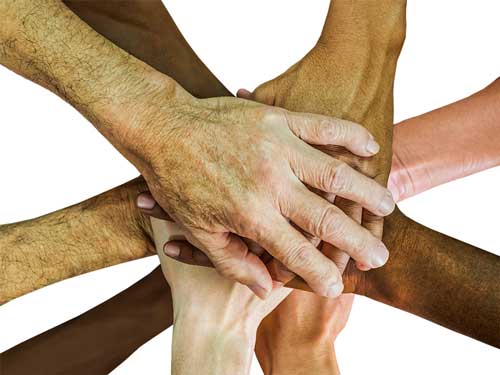
Equality and human rights are at the core of safeguarding in the recognition that a failure to uphold them can impair individuals’ health and development. A lack of equality and human rights can also deny children, young people and adults’ sense of well-being, voice, choice and control. The Equality Act 2010 protects individuals from discrimination, harassment and victimisation as potential aspects of harm, abuse or neglect.
The Human Rights Act 1998 and United Nations Convention on the Rights of the Child contain ‘Articles’ which identify the fundamental rights and freedoms that every child, young person and adult is entitled to.
Mae cydraddoldeb a hawliau dynol wrth wraidd diogelu o ran cydnabod y gall methu â’u cynnal amharu ar iechyd a datblygiad unigolion. Hefyd gall diffyg cydraddoldeb a hawliau dynol wadu ymdeimlad o les, llais, dewis a rheolaeth i blant, pobl ifanc ac oedolion. Mae Deddf Cydraddoldeb 2010 yn amddiffyn unigolion rhag gwahaniaethu, aflonyddu ac erledigaeth fel agweddau posib ar niwed, camdriniaeth neu esgeulustod.
Mae Deddf Hawliau Dynol 1998 a Chonfensiwn y Cenhedloedd Unedig ar Hawliau’r Plentyn yn cynnwys ‘Erthyglau’ sy’n nodi’r hawliau a’r rhyddidau sylfaenol y mae gan bob plentyn, person ifanc ac oedolyn hawl iddynt.